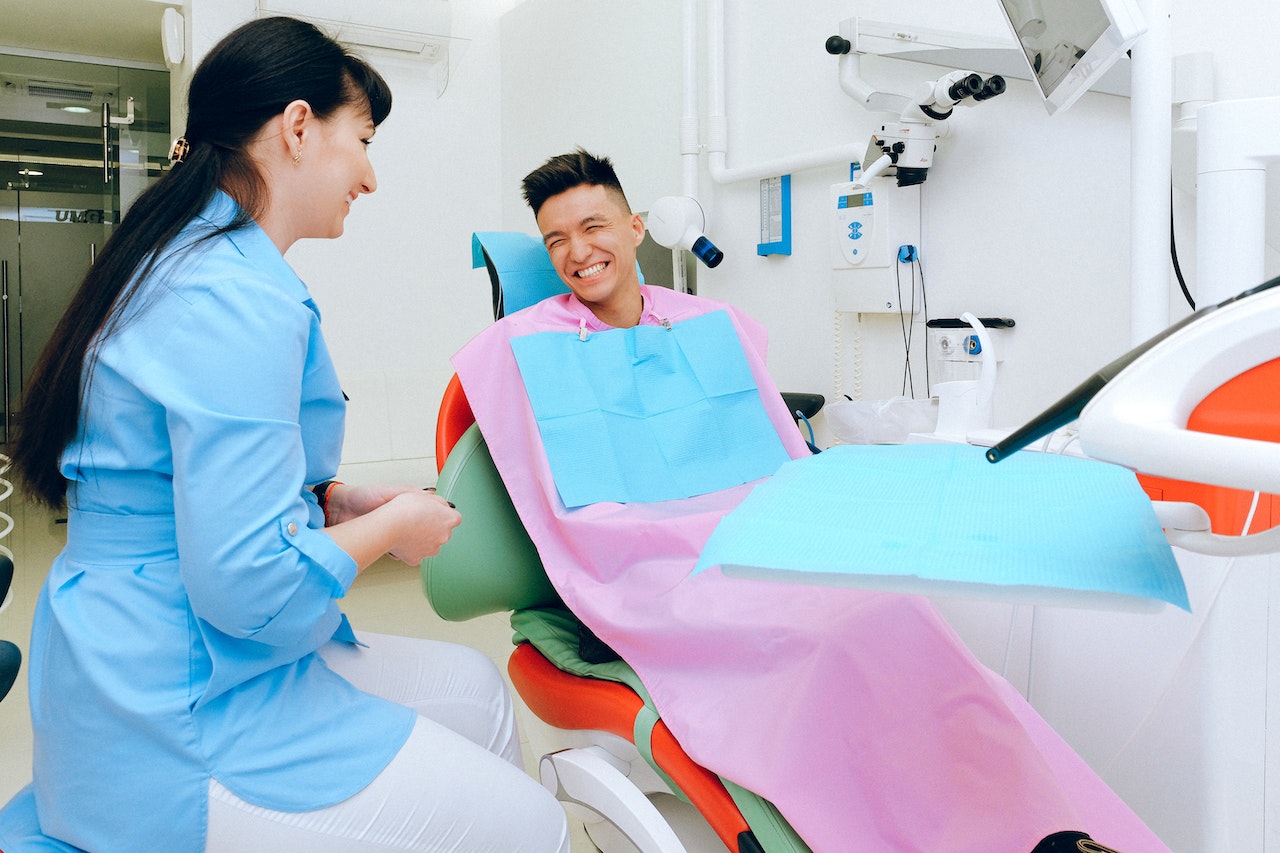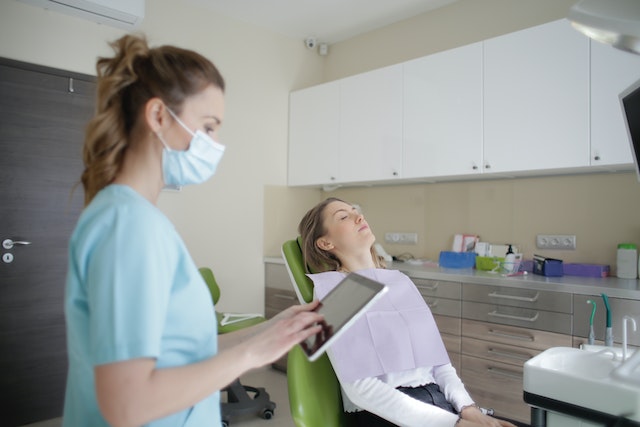Comments
- No comments found

From ancient civilizations to the cutting-edge practices of today, the pursuit of a perfect smile has a long and intriguing history.
Orthodontics, the branch of dentistry focused on correcting misaligned teeth and jaws, has undergone a fascinating evolution over the centuries.
In this journey through time, we will unravel the origins of orthodontics, uncover the ingenious methods used by our ancestors, and explore how modern innovations have transformed the way we achieve straighter smiles.
Our journey starts in the annals of antiquity, where archaeological discoveries reveal that even the ancient Egyptians were preoccupied with dental aesthetics.
As early as 4000 BC, it is believed that the Etruscans, predecessors to the Romans, experimented with dental appliances made of various metals and animal materials. Archaeologists have unearthed mummies with crude metal bands wrapped around teeth, suggesting that even in the shadow of the pyramids, people were seeking ways to align their teeth.
In ancient Rome, the renowned physician Aulus Cornelius Celsus penned writings that included techniques for preventing dental issues and maintaining oral hygiene. Celsus observed the practice of using finger pressure to guide teeth into their proper positions, a rudimentary precursor to modern orthodontic principles. His observations laid the groundwork for early orthodontic practices, as he recommended methods for applying pressure to teeth to guide them into proper alignment.
Fast forward to the 18th century, when Pierre Fauchard, often referred to as the "Father of Modern Dentistry," introduced a revolutionary concept in his book "The Surgeon Dentist."
Fauchard advocated the use of various devices, including finger pressure and archwires, to correct tooth irregularities. This marked the beginning of a more systematic approach to orthodontics.
The 19th century saw the emergence of orthodontics as a distinct field within dentistry. Eminent dentist Christophe-François Delabarre invented the bandeau, a horseshoe-shaped device made of precious metal, designed to expand dental arches. Progress was also made in the development of braces, with gum elastics and gold bands coming into use. However, these early methods were often uncomfortable and lacking in precision.
The 20th century witnessed a surge of innovation that would shape the future of orthodontics. Edward Angle, an American dentist often hailed as the "Father of Modern Orthodontics," introduced the concept of the "Angle Classification" system, which categorized different types of malocclusions. Angle's work laid the foundation for standardized diagnosis and treatment planning.
In the early 20th century, the introduction of X-rays revolutionized orthodontics by allowing dentists to visualize tooth and jaw structures beneath the surface. This enabled more accurate diagnoses and treatment planning. Moreover, the use of stainless steel in orthodontic appliances paved the way for durable and effective braces.
The 1970s marked a significant turning point with the advent of adhesive technology. Stainless steel brackets, attached to teeth with adhesive resin, replaced the cumbersome bands and allowed for greater precision and comfort. This breakthrough not only transformed the patient experience but also enabled orthodontists to achieve more predictable and desirable outcomes.

The dawn of the 21st century brought a remarkable innovation: clear aligners. Invisalign, introduced in 1997, pioneered the use of computer-aided design and 3D printing to create customized, nearly invisible aligners. This approach revolutionized orthodontic treatment, allowing patients to straighten their teeth discreetly and comfortably.
Clear aligners work by gradually shifting teeth using a series of custom-made trays. Each tray exerts gentle pressure, nudging teeth into their desired positions over time. The digital aspect of this treatment enables orthodontists to create precise treatment plans and offer patients a clear visual representation of their future smiles.
Not only can clear aligners effectively correct your misaligned teeth, these days they can even do it while you’re asleep. Nighttime clear aligners from Alignerco are specially designed to be worn while you sleep, providing gentle but firm correction free from the hassle of daytime meals and activities.
The 21st century has ushered in a new era of orthodontics, characterized by digital technologies that have transformed the way we diagnose, plan, and execute orthodontic treatment. Digital imaging, computer-aided design (CAD), and 3D printing have become integral components of modern orthodontic practice.
Digital impressions have replaced the uncomfortable process of taking traditional moulds. With a simple scan, orthodontists can capture accurate 3D images of a patient's teeth and bite, creating a virtual model that serves as the basis for treatment planning. This digital precision allows orthodontists to design custom treatment plans tailored to each patient's unique dental anatomy.
Computer simulations enable patients to see the anticipated results of their treatment before it even begins. Advanced software can simulate the step-by-step movement of teeth, providing patients with a glimpse of their future smile. This not only empowers patients to make informed decisions but also enhances their motivation throughout the treatment process.
Furthermore, 3D printing technology has revolutionized the fabrication of orthodontic appliances. From aligners to retainers, these appliances can now be custom-made with exceptional accuracy, ensuring comfortable fits and optimal outcomes.

Beyond technological advancements, cultural shifts and changing aesthetic preferences have also played a significant role in shaping the field of orthodontics. The desire for a harmonious smile remains timeless, but the emphasis on aesthetics has led to the development of more discreet and stylish orthodontic options.
In response to these changing preferences, orthodontists have developed ceramic braces that blend with the natural color of teeth, making them less noticeable than traditional metal braces. Additionally, lingual braces, which are attached to the back surface of teeth, offer a nearly invisible alternative for individuals who seek discretion without compromising on treatment effectiveness.
The introduction of clear aligners has been a game-changer for patients who value both aesthetics and convenience. Clear aligners are crafted from transparent materials, making them virtually invisible when worn. This aesthetic appeal has made orthodontic treatment more appealing to adults, who can now achieve straighter teeth without the appearance of traditional braces.
While the evolution of orthodontics has primarily focused on physical outcomes, its impact extends far beyond straight teeth and aligned jaws. The psychological and social benefits of orthodontic treatment are equally profound, contributing to enhanced self-esteem, confidence, and overall well-being.
Misaligned teeth can often lead to feelings of self-consciousness and even impact individuals' willingness to smile. Orthodontic treatment can alleviate these concerns, empowering individuals to showcase their smiles with pride. Research has shown that individuals who undergo orthodontic treatment often experience improved self-esteem and a more positive self-image, which can have a ripple effect on various aspects of their lives.
The evolution of orthodontics is a testament to human innovation, resilience, and the pursuit of perfection.
From the rudimentary methods of ancient civilizations to the precision of digital technologies, orthodontics has evolved into a multifaceted field that addresses not only physical alignment but also psychological well-being and social confidence.
As we embrace the advancements of the digital age, we are reminded of the enduring human desire for self-improvement and self-expression. The smile, a universal symbol of joy and connection, serves as a bridge between generations, cultures, and technological eras. It is a reflection of our shared human journey—a journey that continues to evolve, one smile at a time.
Leave your comments
Post comment as a guest